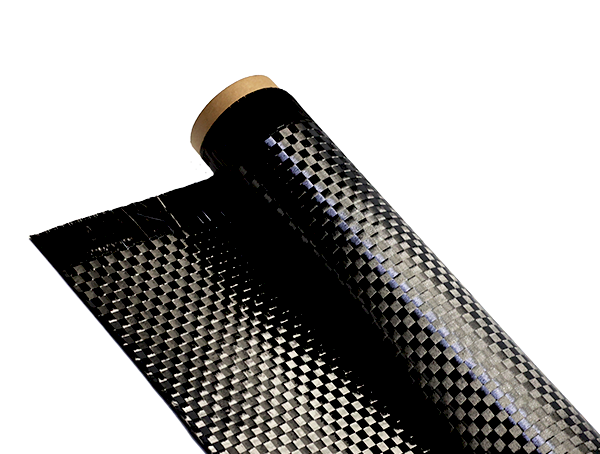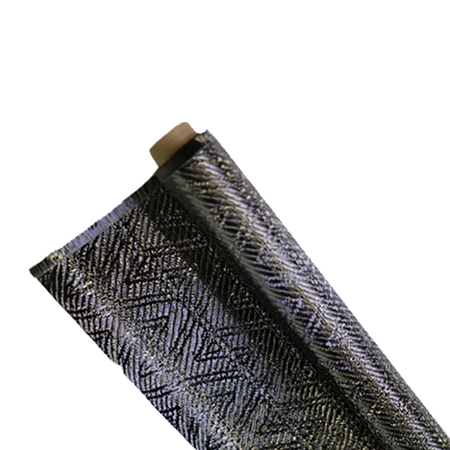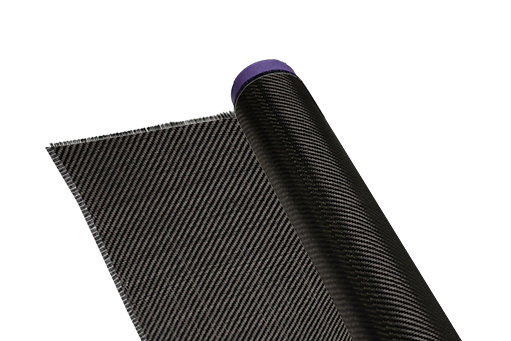Why Strength-to-Weight Ratio Is Critical in Engineering
-
Table of Contents
“Maximizing Performance: The Essential Role of Strength-to-Weight Ratio in Engineering Design.”
The strength-to-weight ratio is a fundamental concept in engineering that measures the strength of a material relative to its weight. This ratio is critical in various applications, including aerospace, automotive, and structural engineering, where performance, efficiency, and safety are paramount. A high strength-to-weight ratio allows for the design of lighter structures that can withstand greater loads, leading to improved fuel efficiency, enhanced performance, and reduced material costs. Engineers prioritize this ratio to optimize designs, ensuring that structures and components can achieve their intended functions without unnecessary weight, ultimately contributing to innovation and sustainability in engineering practices.
Importance of Strength-to-Weight Ratio in Aerospace Engineering
The strength-to-weight ratio is a fundamental concept in aerospace engineering, playing a pivotal role in the design and performance of aircraft and spacecraft. This ratio, which compares the strength of a material to its weight, is crucial for ensuring that vehicles can withstand the stresses of flight while remaining as lightweight as possible. In aerospace applications, where every gram counts, optimizing this ratio can lead to significant improvements in efficiency, performance, and safety.
To begin with, the importance of the strength-to-weight ratio in aerospace engineering is underscored by the need for fuel efficiency. Aircraft and spacecraft must overcome gravitational forces and atmospheric drag, which requires substantial energy. By utilizing materials with high strength-to-weight ratios, engineers can design lighter structures that require less fuel to achieve the same performance levels. This not only reduces operational costs but also minimizes environmental impact, aligning with the growing emphasis on sustainability in the aerospace sector. As a result, manufacturers are increasingly turning to advanced materials such as carbon fiber composites and titanium alloys, which offer superior strength without the added weight.
Moreover, the strength-to-weight ratio directly influences the overall performance of aerospace vehicles. For instance, in the case of aircraft, a higher ratio allows for greater payload capacity, enabling the transport of more passengers or cargo without compromising safety or performance. This is particularly important in commercial aviation, where airlines strive to maximize efficiency and profitability. Similarly, in the realm of space exploration, the ability to launch heavier payloads into orbit can significantly enhance mission capabilities, allowing for more sophisticated satellites or scientific instruments to be deployed. Thus, the strength-to-weight ratio is not merely a technical specification; it is a critical factor that can determine the success of a mission.
In addition to performance and efficiency, safety is another paramount concern in aerospace engineering that is closely tied to the strength-to-weight ratio. Aircraft and spacecraft are subjected to extreme conditions, including turbulence, high speeds, and varying atmospheric pressures. A structure that is too heavy may not only be inefficient but also more prone to failure under stress. Conversely, materials that are too lightweight may lack the necessary strength to endure these conditions. Therefore, engineers must strike a delicate balance, ensuring that the materials used can withstand operational stresses while keeping the overall weight to a minimum. This careful consideration of the strength-to-weight ratio is essential for maintaining the integrity and safety of aerospace vehicles.
Furthermore, advancements in technology continue to enhance the understanding and application of the strength-to-weight ratio in aerospace engineering. Innovations in material science, such as the development of lightweight alloys and composite materials, have expanded the possibilities for engineers. These materials not only provide improved strength-to-weight ratios but also offer additional benefits, such as resistance to corrosion and fatigue. As research progresses, the aerospace industry is likely to see even more breakthroughs that will further optimize the strength-to-weight ratio, leading to safer, more efficient, and more capable aircraft and spacecraft.
In conclusion, the strength-to-weight ratio is a critical consideration in aerospace engineering, influencing fuel efficiency, performance, safety, and the potential for technological advancements. As the industry continues to evolve, the emphasis on optimizing this ratio will remain paramount, driving innovation and shaping the future of aerospace design and engineering. By prioritizing the strength-to-weight ratio, engineers can ensure that aerospace vehicles are not only effective in their missions but also sustainable and safe for future generations.
Impact of Strength-to-Weight Ratio on Automotive Design
The strength-to-weight ratio is a pivotal consideration in automotive design, influencing various aspects of vehicle performance, safety, and efficiency. This ratio, defined as the amount of strength a material possesses relative to its weight, plays a crucial role in determining how vehicles respond under different conditions. As automotive engineers strive to create vehicles that are not only powerful but also lightweight, understanding the implications of strength-to-weight ratio becomes essential.
One of the primary impacts of strength-to-weight ratio in automotive design is its direct correlation with fuel efficiency. Lighter vehicles require less energy to accelerate and maintain speed, which translates to improved fuel economy. This is particularly significant in an era where environmental concerns and fuel costs are paramount. By utilizing materials with high strength-to-weight ratios, such as advanced composites and high-strength steel, engineers can reduce the overall weight of the vehicle without compromising structural integrity. Consequently, this reduction in weight leads to lower emissions and a smaller carbon footprint, aligning with global sustainability goals.
Moreover, the strength-to-weight ratio significantly affects vehicle handling and performance. A vehicle that is lighter yet retains high strength can achieve better agility and responsiveness. This is particularly important in performance-oriented vehicles, where acceleration, cornering, and braking capabilities are critical. Engineers often focus on optimizing the strength-to-weight ratio to enhance the driving experience, allowing for a more dynamic interaction between the vehicle and the driver. As a result, vehicles can be designed to perform better in various driving conditions, from everyday commuting to high-speed racing.
In addition to performance and efficiency, safety is another critical area influenced by the strength-to-weight ratio. Modern automotive design increasingly prioritizes occupant protection, necessitating the use of materials that can absorb and dissipate energy during a collision. A high strength-to-weight ratio allows for the construction of robust safety structures that can withstand impact forces while keeping the overall vehicle weight down. This balance is essential, as heavier vehicles may offer more protection but can also lead to increased stopping distances and reduced maneuverability. Therefore, engineers must carefully consider the materials used in safety-critical components, ensuring that they provide maximum protection without adding unnecessary weight.
Furthermore, the strength-to-weight ratio also plays a vital role in the design of electric vehicles (EVs). As the automotive industry shifts towards electrification, the need for lightweight materials becomes even more pronounced. Electric vehicles rely on batteries that can be heavy, and thus, reducing the weight of the vehicle itself is crucial to extend range and improve efficiency. By employing materials with favorable strength-to-weight ratios, manufacturers can offset the weight of the battery packs, resulting in a more balanced and efficient vehicle. This not only enhances performance but also addresses consumer concerns regarding the range and practicality of electric vehicles.
In conclusion, the strength-to-weight ratio is a fundamental aspect of automotive design that impacts fuel efficiency, performance, safety, and the viability of electric vehicles. As engineers continue to innovate and push the boundaries of material science, the importance of optimizing this ratio will only grow. By focusing on achieving an ideal balance between strength and weight, the automotive industry can create vehicles that are not only more efficient and safer but also more enjoyable to drive. Ultimately, the strength-to-weight ratio serves as a guiding principle in the quest for advanced automotive solutions that meet the demands of modern society.
Role of Strength-to-Weight Ratio in Structural Engineering
The strength-to-weight ratio is a fundamental concept in structural engineering, playing a pivotal role in the design and analysis of various structures. This ratio, defined as the strength of a material divided by its weight, serves as a critical parameter that influences the performance, efficiency, and safety of engineering projects. As engineers strive to create structures that are not only robust but also lightweight, understanding the implications of the strength-to-weight ratio becomes essential.
In the realm of structural engineering, the strength-to-weight ratio directly impacts the selection of materials. For instance, materials such as aluminum and titanium are often favored in aerospace applications due to their high strength-to-weight ratios. These materials allow for the construction of aircraft that can withstand significant aerodynamic forces while minimizing overall weight. Consequently, this reduction in weight leads to improved fuel efficiency and enhanced performance, demonstrating how the strength-to-weight ratio can influence operational costs and environmental impact.
Moreover, the importance of the strength-to-weight ratio extends beyond aerospace engineering. In civil engineering, for example, the design of bridges and buildings requires careful consideration of this ratio to ensure structural integrity while optimizing material usage. Engineers must balance the need for strength to support loads, such as vehicles or occupants, with the desire to minimize the weight of the materials used. This balance is crucial, as excessive weight can lead to increased foundation costs and potential structural failures. Therefore, a thorough understanding of the strength-to-weight ratio allows engineers to make informed decisions that enhance both safety and economic viability.
In addition to material selection, the strength-to-weight ratio also influences the design of structural components. For instance, in the design of beams and columns, engineers often utilize advanced computational methods to analyze how different shapes and materials can optimize this ratio. By employing techniques such as finite element analysis, engineers can simulate various loading conditions and assess how changes in geometry or material properties affect the overall performance of a structure. This analytical approach not only aids in achieving a favorable strength-to-weight ratio but also contributes to innovative design solutions that push the boundaries of traditional engineering practices.
Furthermore, the strength-to-weight ratio plays a significant role in the sustainability of engineering projects. As the industry increasingly prioritizes environmentally friendly practices, the need for lightweight structures becomes more pronounced. Lighter structures require less material, which in turn reduces the carbon footprint associated with production and transportation. By focusing on optimizing the strength-to-weight ratio, engineers can contribute to the development of sustainable infrastructure that meets modern demands while minimizing environmental impact.
In conclusion, the strength-to-weight ratio is a critical factor in structural engineering that influences material selection, design processes, and sustainability efforts. As engineers continue to innovate and push the limits of what is possible, a deep understanding of this ratio will remain essential. By prioritizing the strength-to-weight ratio, engineers can create structures that are not only safe and efficient but also aligned with the growing emphasis on sustainability in the built environment. Ultimately, the interplay between strength and weight will continue to shape the future of engineering, driving advancements that enhance both functionality and environmental responsibility.
Q&A
1. **Question:** What is the strength-to-weight ratio?
**Answer:** The strength-to-weight ratio is a measure of the strength of a material relative to its weight, indicating how much load a material can support per unit of weight.
2. **Question:** Why is the strength-to-weight ratio important in aerospace engineering?
**Answer:** In aerospace engineering, a high strength-to-weight ratio is crucial for reducing fuel consumption, increasing payload capacity, and enhancing overall performance of aircraft and spacecraft.
3. **Question:** How does the strength-to-weight ratio impact automotive design?
**Answer:** In automotive design, a favorable strength-to-weight ratio improves vehicle performance, fuel efficiency, and safety by allowing for lighter structures that maintain structural integrity during crashes.The strength-to-weight ratio is critical in engineering because it directly influences the performance, efficiency, and safety of structures and components. A high strength-to-weight ratio allows for lighter designs that can withstand greater loads, leading to improved fuel efficiency in transportation, enhanced structural integrity in buildings, and increased agility in aerospace applications. This ratio also facilitates innovative designs that optimize material usage, reduce costs, and minimize environmental impact. Ultimately, prioritizing strength-to-weight ratio is essential for advancing technology and achieving sustainable engineering solutions.











